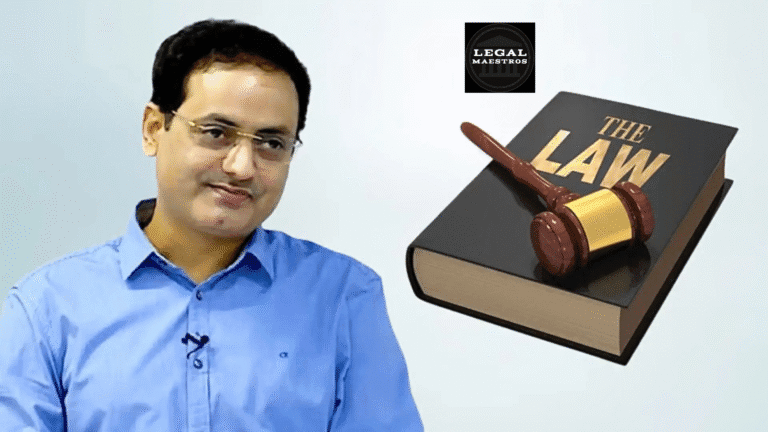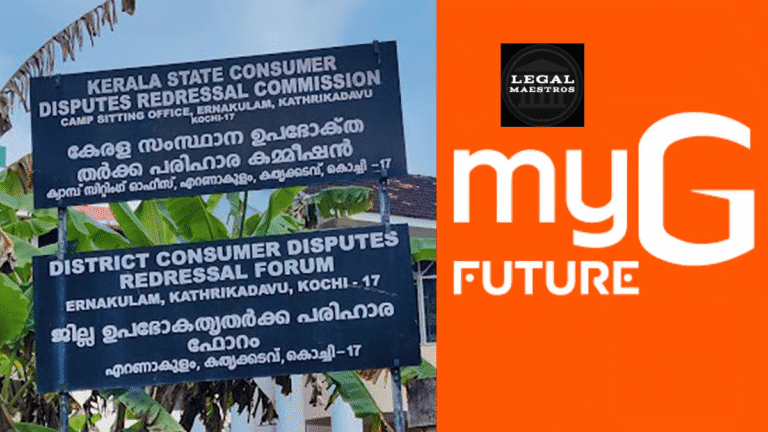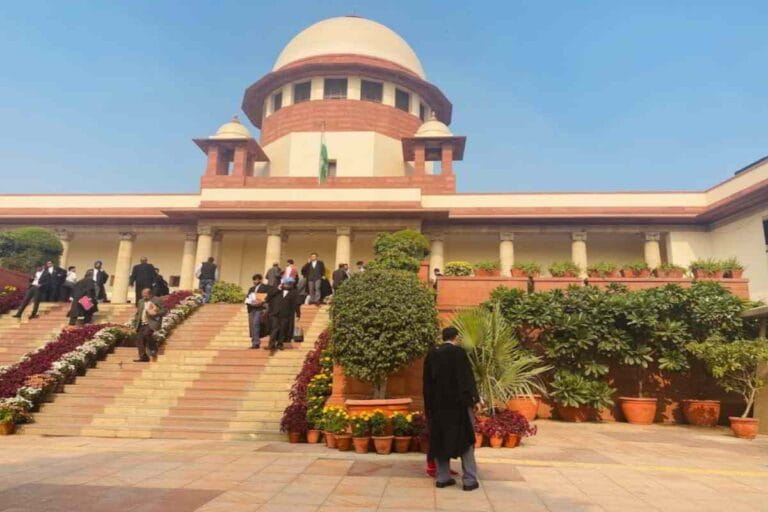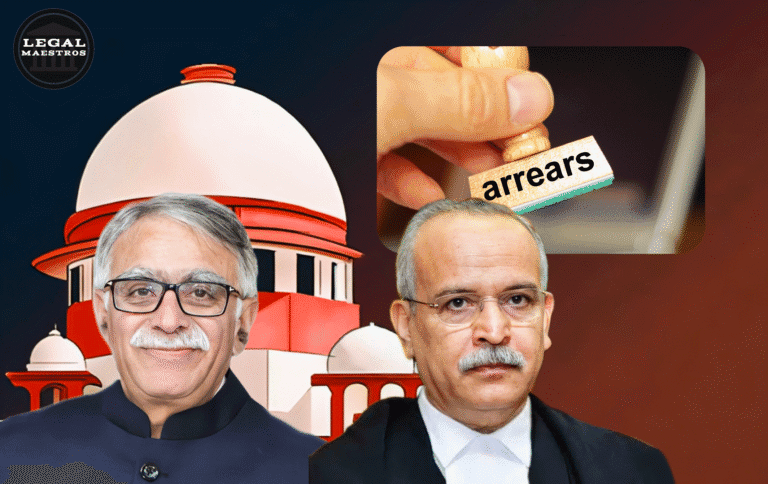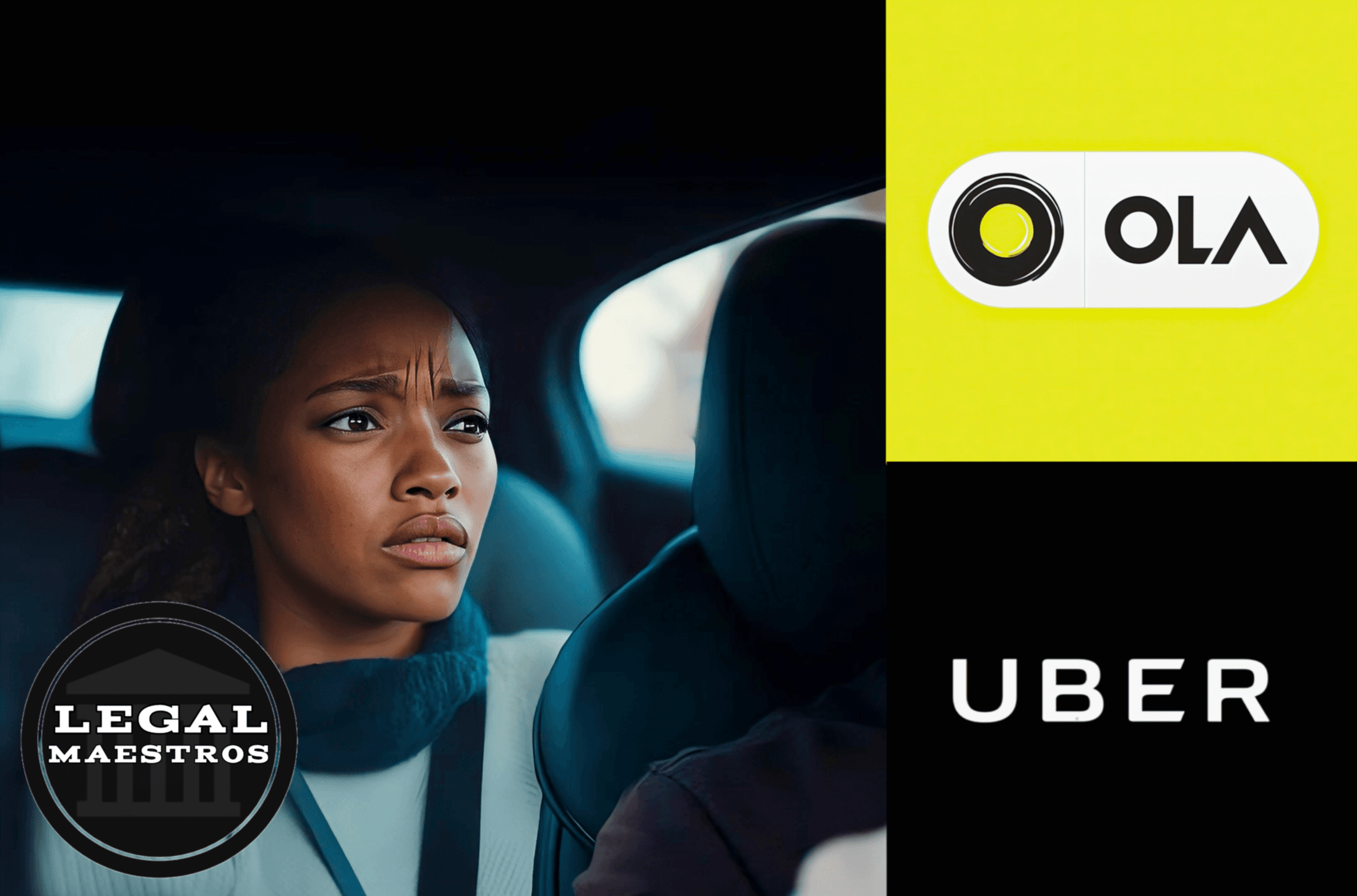
The Growing Popularity of Ride-Hailing Services and New Concerns
Over the course of a few years, ride-hailing apps such as Ola and Uber have become an indispensable part of city life in India. They have attracted millions of users due to the fact that they are both convenient and transparent.
As their presence grew, however, there was an increase in the number of reports of driver misconduct, which included everything from verbal abuse to physical assault. Instances like these have caused people to feel uneasy and have triggered legal investigation. One of the most pressing questions that arises in situations where a rider is subjected to harassment or harm is whether or not the platform through which the booking was made may be held accountable, or whether or not drivers are solely responsible for their actions.
To find an answer to this question, it is necessary to investigate the legal nature of these platforms, the responsibilities that are mandated by the law, and the manner in which the courts have interpreted the interaction between drivers and applications.
For More Updates & Regular Notes Join Our Whats App Group (https://chat.whatsapp.com/DkucckgAEJbCtXwXr2yIt0) and Telegram Group ( https://t.me/legalmaestroeducators ) contact@legalmaestros.com.
Acquiring Knowledge of the Contractual Relationship at Hand
Ola and Uber both consider their drivers to be independent contractors rather than employees as opposed to employees. The drivers sign agreements that provide them access to the platform in exchange for a commission on fares. These agreements are outlined in the terms of service that they provide.
As a result of this contractual arrangement, drivers are able to select when and where they work, which further emphasizes the concept of autonomy. Because of their independence, platforms are protected from the usual responsibilities of employers, such as paying wages and providing benefits, as well as exercising direct control over the actions that take place on a daily basis.
On the other hand, the apps continue to have the authority to deactivate drivers in the event that they violate the policies or receive negative ratings. This demonstrates a degree of monitoring that makes the pure contractor model more complicated.
For More Updates & Regular Notes Join Our Whats App Group (https://chat.whatsapp.com/DkucckgAEJbCtXwXr2yIt0) and Telegram Group ( https://t.me/legalmaestroeducators )
In accordance with the Motor Vehicles Act, the regulatory framework
A number of provisions that are relevant to digital ride-hailing services were included in the Motor Vehicles Act after it was modified in 2019. An entity that makes use of a digital media to link passengers with drivers is what is meant by the term “aggregator” in this context.
Aggregators are required to ensure that drivers possess valid licenses and that cars have sufficient registration, insurance, and fitness certificates in accordance with these requirements. If these conditions are not met, there is a possibility that sanctions and the suspension of operating licenses will be considered.
Aggregators are not only required by law to keep records of journeys, fares, and driver information, but they are also tasked with the responsibility of being the custodians of vital information for investigations. Despite the fact that these responsibilities center on safety and compliance, they do not include the imposition of direct vicarious liability for the activities of drivers while they are on the road.
Vicarious Liability and the Interpretations of the Judicial System
In accordance with the traditional principles of vicarious responsibility, employers may be held liable for unlawful acts that are performed by workers while they are on the job. On the other hand, when it comes to independent contractors, the party that hires them is often not held liable for any damages that may occur.
Within the context of ride-hailing apps, the highest courts in India have, for the most part, upheld this distinction. Several decisions have highlighted the fact that drivers are considered to be independent and that there is no master-servant relationship between them. In spite of this, there are legal experts who say that when an aggregator has a considerable amount of control over a situation, such as determining fare rates, tracking the position of drivers in real time, and establishing performance goals, their role is comparable to that of an employer.
Indian courts have, up to this point, been unwilling to blur the boundaries between drivers and other business companies, emphasizing that drivers continue to be considered separate business organizations.
Consumer protection and inadequate service provided to customers
Platforms that provide services to end-users are subject to legal action under the Consumer Protection Act if they are found to be providing inadequate service. Ride-hailing apps have been interpreted by the courts as service providers, which means that passengers have the ability to contact consumer forums in order to seek compensation for their complaints.
These assertions do not necessitate the existence of an employer-employee relationship; rather, they center on the confidence that the journey will be secure and dependable. The inability of the platform to protect the safety of passengers or to take fast corrective action in response to complaints can be considered a deficiency in the event that a driver engages in inappropriate behavior.
In practice, a number of consumer commissions have issued directives to aggregators, requiring them to pay compensation to customers who have been wronged. This highlights the aggregators’ accountability as service facilitators, even if they are not directly hiring employees.
There is a duty of care and criminal liability.
Liability in criminal law frequently depends on whether the defendant was negligent or cooperative. It is possible for authorities to seek accusations of negligence under general criminal statutes in the event that an aggregator intentionally permits drivers who have not been verified to operate as well as fails to take action on repeated reports of wrongdoing.
Furthermore, the responsibility of the aggregator to give correct travel data and driver identity helps law enforcement agencies conduct investigations more quickly. The courts have ruled that platforms are not allowed to take a laissez-faire approach; rather, companies are required to proactively enforce safety regulations, undertake background checks, and respond to emerging dangers.
On the other hand, in situations when a driver suddenly engages in violent or abusive behavior, the primary criminal accountability is with the driver, unless there is evidence that demonstrates the platform was directly involved or negligent.
There are mechanisms for insurance and compensation.
Both Ola and Uber provide passengers with insurance coverage through third-party insurers of their respective services. In most cases, these plans come into effect in the event that an accident or injury occurs while the ride is being taken.
On the other hand, covering for misconduct like as violence or verbal abuse is frequently excluded, leaving victims with no choice but to rely on claims obtained out of their own pockets or legal action taken against the driver. Goodwill payments and dispute resolution services may be offered by platforms; however, these offerings are subject to discretion and are determined on an individual basis at each platform.
There is a gap in passenger protection that is highlighted by the absence of uniform compensation guidelines for non-accident claims. This gap stimulates disputes over whether or not aggregators should offer greater coverage for all sorts of harm that may occur on their platforms.
Perspectives from Different Countries and on a Global Scale
Across the globe, judicial systems and regulatory bodies have struggled with questions that are comparable. Limited platform liability has been recognized by historic opinions in certain countries, particularly in situations when rigorous control systems are in place.
The introduction of specific legislation that classify ride-hailing services and impose mandatory passenger protection mechanisms has been done by other individuals.
Although India’s regulatory approach is in line with the global trend of distinguishing between independent contractors and employees, there is a possibility that platforms could be subject to more stringent duties as a result of pressure from consumer advocacy groups and shifting jurisprudence. Observers have noted that maintaining a balance between innovation and accountability continues to be a difficulty that is common to all marketplaces.
Various Methods for the Reduction of Risk
Aggregators are constantly working to improve their policies in order to reduce their risk of legal liability. Typical precautions include conducting exhaustive background checks, re-verifying the credentials of drivers on a regular basis, and incorporating safety elements inside the application, such as emergency buttons.
In addition, platforms have customer assistance that is available around the clock and work closely with law enforcement to address concerns in a timely manner. It is possible to speed up the intervention process by ensuring that passengers are aware of the grievance redressal options available on the platform and that occurrences are reported promptly.
Both parties have a part to play in the process of creating a more secure ride-hailing ecosystem, one in which instances of inappropriate behavior are promptly discovered and remedied.
Whether or not a driver is liable for wrongdoing that occurs during trips is contingent upon the kind of the relationship that exists between platforms and drivers, the statutory duties that are imposed by transportation legislation, and the interpretations that are made by consumer and criminal courts.
Despite the fact that Indian law continues to treat drivers as independent contractors, platforms are nonetheless held accountable for their role as service providers and as guardians of safety rules. In spite of the fact that the individual driver bears the majority of the direct criminal culpability, passengers have recourse through consumer forums and insurance schemes.
It is imperative that regulatory frameworks and platform practices grow in tandem with the development of ride-hailing services in order to guarantee that passenger safety is not compromised in the sake of convenience.
